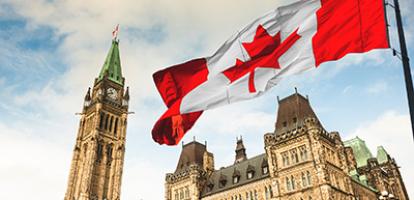Published in the Financial Post
Media reports abound with speculation about how Bank of Canada interest rate cuts will lift the Canadian housing market. To be sure, you hear cautionary notes that the rate cuts that began with last week’s 25-basis-point cut will likely be slow. Less has been said, however, about how for many homeowners lower rates won’t actually reduce borrowing costs.
Variable-rate mortgages should see a full and immediate response to the rate cuts. But the 2024 CMHC Mortgage Consumer Survey shows only 23 per cent of mortgages are variable rate, five per cent are a fixed/variable combination and 69 per cent are fixed rate. The most common fixed-rate mortgages are for five years although three-year terms have been gaining in popularity.
Fixed-rate mortgages are priced off the corresponding bond yield. Implicit in the anticipation of rate cuts lifting the housing market is an expectation bond yields will move down with Bank of Canada policy rate cuts. In fact, a big decline is unlikely. It would perpetuate today’s inverted yield curve, which has long-term rates lower than short-term rates. That’s not the norm. Because uncertainty increases with time, bond-holders expect to be rewarded for the heightened risk associated with longer terms. Therefore longer rates are usually higher than shorter ones.
To escape the impossibility of guessing the exact timing of Bank of Canada rate cuts, let’s fast-forward to a time, a year or two from now, when the process has been completed. If the economy is operating to the Bank’s satisfaction, the policy rate should be consistent with a “neutral” rate. While the Bank’s estimate could change, at present neutrality is regarded as 2.25-3.25 per cent. If we focus on the mid-point of 2.75 per cent, that means the Bank has another 200 basis points of cutting to do. What would bond yields be when the bank rate is down to 2.75 per cent?
To construct a likely scenario, we need to dip back into history to determine what “normal” might be for monetary conditions. During the 10 years 1996-2005 the Bank was attempting to be neutral in its policy, wishing neither to stimulate nor restrain economic activity. (Prior to 1992 the Bank was typically trying to lower high inflation. From 1992 to 1995 inflation was around two per cent but the bank rate remained elevated as it was taking time for the Bank to gain credibility. As for bond yields, they were driven up by the very high government debt burden. After 2005 the bank rate rose significantly and then the 2008 financial crisis ushered in an extended period of hyper-stimulative monetary policy with near-zero bank rates and massive bond purchases — which were definitely not neutral.)
During the “normal” decade from 1996-2005 the bank rate averaged 3.98 per cent. That’s a lot higher than 2.75 per cent but most people believe the “neutral” rate has come down over time. During those “normal” years, the spread between the bank rate and bond yields averaged 84 basis points for three-year bonds and 112 bps for five-years. If we tack those spreads onto a 2.75-per cent “neutral” bank rate, that suggests the future three- and five-year bond yields would be 3.64 and 3.87 per cent, respectively.
What are they now? The three-year rate closed last week at 3.80 per cent and the five-year rate at 3.43 per cent. So three-year bonds are indeed paying a little higher than their anticipated “normal” value and do have room — though only 16 basis points — to come down. But at last week’s close five-year rates were already 44 points lower than their expected normal rate when the bank rate is at “neutral.” To get to a normal level, based on the term spread from 1996 to 2005, they would have to rise. If they did rise, mortgage rates likely would rise with them — which is quite different from what most pundits are predicting.
The bottom line is that a return to “normalcy” in monetary policy and conditions will bring little if any relief to the cost of most mortgages. The cost of longer-term mortgages might even go up. The corollary is that current bond yields are quite low relative to both the current bank rate and estimates of the “neutral” rate. Bond markets are forward-looking, likely see through the bank rate cuts and attach significant weight to a successful return to target inflation.
There may still, however, be an indirect lift to the housing market from Bank rate cuts as the cost of auto loans, lines of credit and other consumer borrowing declines and easier monetary policy provides greater certainty of output and income growth.
Don Drummond, a Stauffer-Dunning fellow at Queen’s University, is fellow-in-residence at the C.D. Howe Institute.





